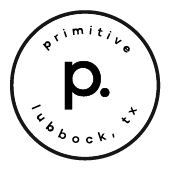BLOG The Power of a CTA
The Power of a CTA
POSTED BY Primitive | Apr 30, 2020

Your website is a powerful marketing tool, one that is increasing in its importance and necessity. (Thank you, quarantine.) Unlike any other asset you have, it’s always open and available to greet your visitors, answer their questions, and help them start the journey of finding a solution to their problems.
But before you go give your website a virtual hug, or consider a makeover, you need to think about what you are going to do with the traffic that comes to your site. You need a way to get some information about your visitors to help you better understand them and their problems. In marketing speak, that’s known as lead generation.
And it all starts with a call to action.
The Role of a CTA in Lead Generation
A call to action (better known as a CTA) is usually a clickable button or image with text that is linked to a landing page. This landing page contains some helpful information for your website visitors and a form for them to fill out (for example, name, email address or phone number, the problem they need solved). In return for filling out this form, the visitor receives a digital offer of some sort: a helpful infographic or white page, a demonstration or how-to video, or an in-depth ebook.
Once this has happened, your website visitor is now considered a lead. Because this person has shown enough interest in your business to share their information with you, they’re a little more serious than other visitors to your website, which means they are likely going to be more receptive to emails, requests for a meeting or consultation, or special discounts or offers. When done poorly, a call to action will offer your business nothing in the way of prospects. But a good CTA can kickstart the process of a website visitor becoming a customer.
The Power of a Good CTA
Unlike creating the perfect batch of Polyjuice potion, creating an effective CTA is simple to do. Just follow these tips (no Boomslang skin required).
- Placement. You want your CTA to live where visitors are most likely to see it and to click on it. For example, it’s common to put a call to action at the end of a blog after visitors have read through what you’ve shared and are eager for more.
- Design.
 Calls to action need to be eye-catching and appealing without being distracting. It goes without saying that a technicolor button blinking like crazy is not the best way to get your visitors to click.
Calls to action need to be eye-catching and appealing without being distracting. It goes without saying that a technicolor button blinking like crazy is not the best way to get your visitors to click. - Text. Most CTAs have text on them – keep this clear and concise and emphasize the action you want visitors to take. For example, “Request your free demo,” or “Set up a consultation with our team.”
- The offer. We all know the saying here, but if you want visitors to hand over their information, you have to give them something they just can’t refuse.
- Lead nurturing. Once a visitor fills out a form on your site, you need to begin building a relationship to convert them into a customer. Set up valuable emails that answer the questions they are most likely to ask, share some of your most helpful blog posts, or offer to hop on a Zoom call with them directly.
Marketers say this all the time, but your online presence is literally more important now than it has ever been before. As your audience spends an unprecedented amount of time online, your business has the incredible opportunity to reach them and build a relationship with them through lead generation and nurturing. And it all starts with a well designed CTA.
If you want to learn more about digital marketing, building a strong online presence, or just creating a CTA that is sure to be clicked, we are here for you. You can reach out to us at any time or subscribe to our blog for daily tips and insights delivered straight to your inbox.
SHARE THIS POST:

About the writer, Primitive
The team behind On the Dot. is made up of creatives, strategists, and developers who give a damn. At Primitive, we craft digital solutions that help businesses grow from brand to backend. Every insight we share is backed by strategy, driven by results, and built to move your business forward.
